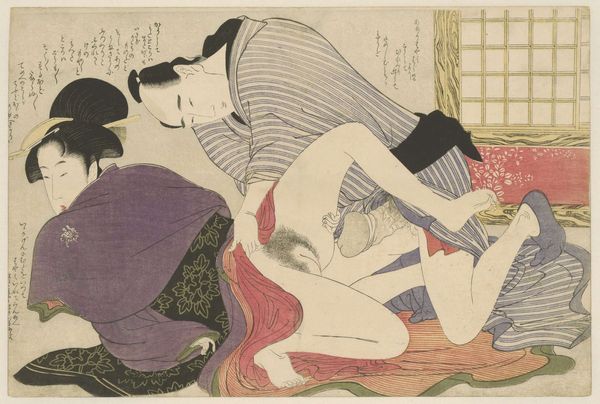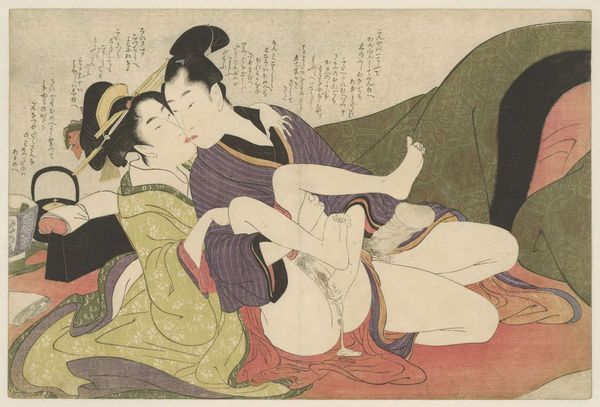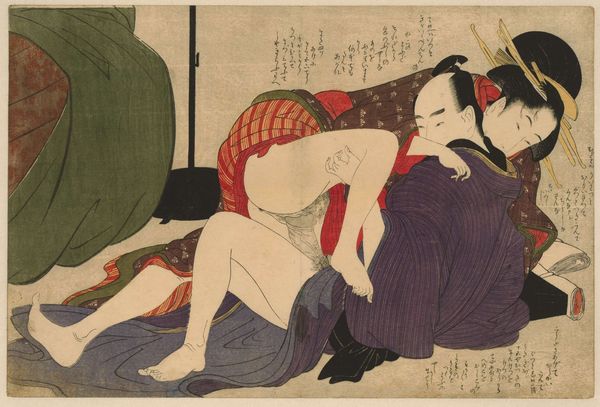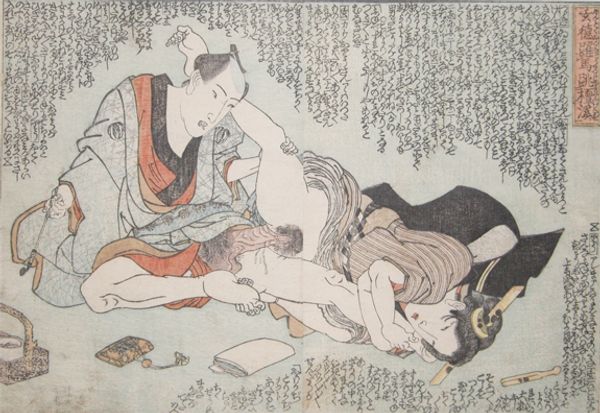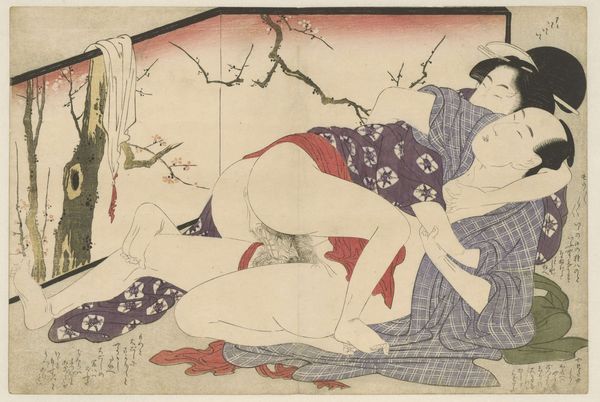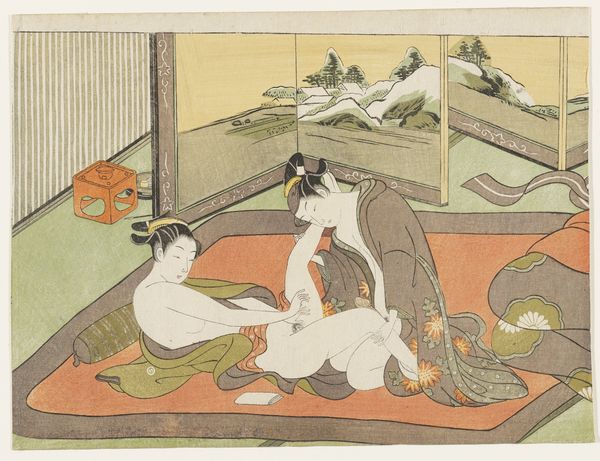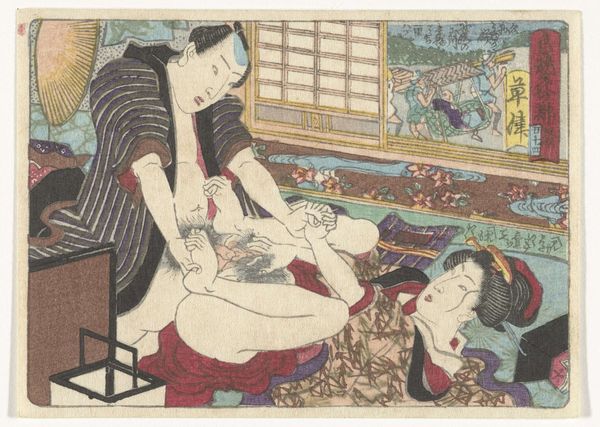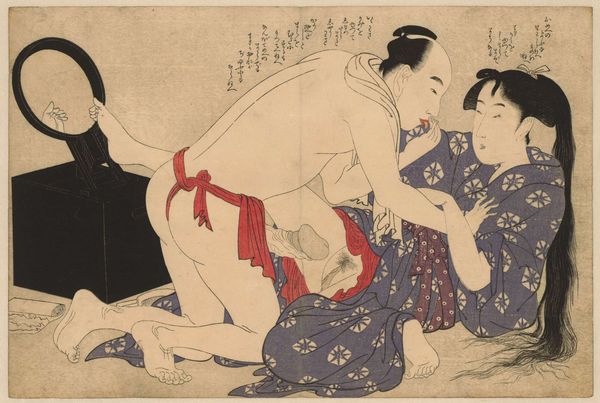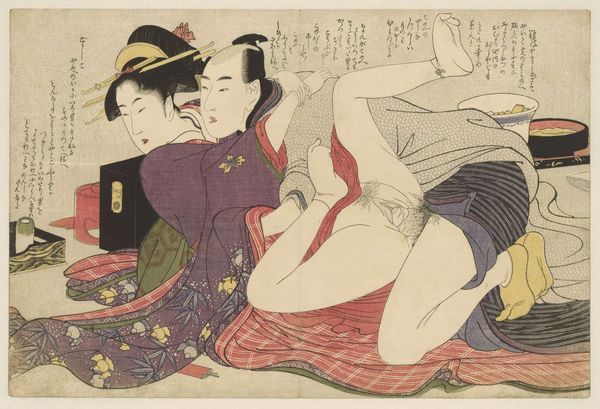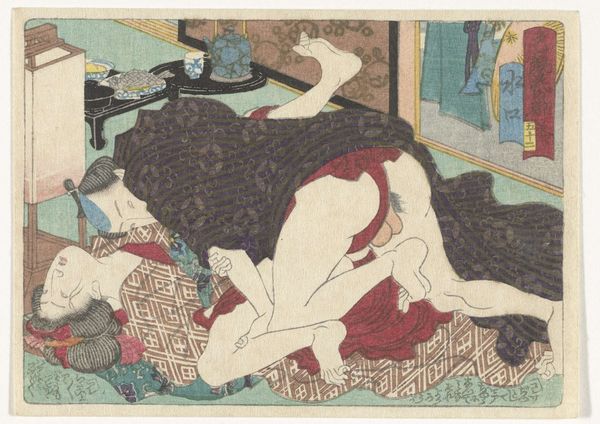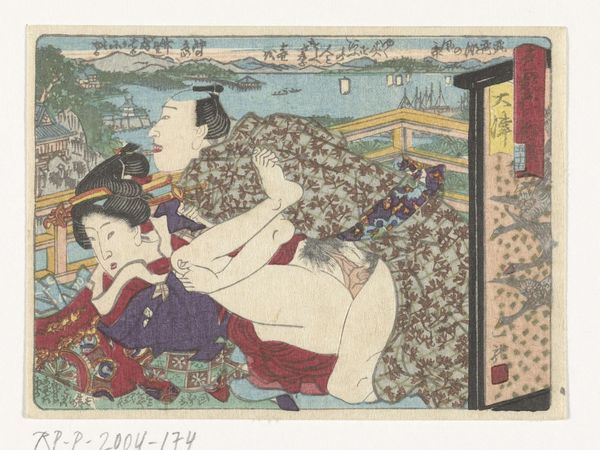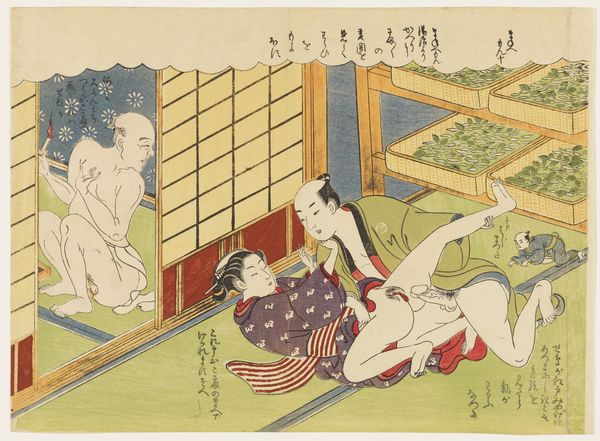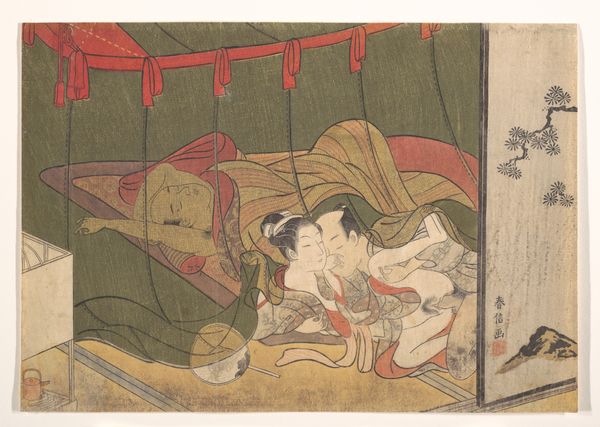
print, woodblock-print
# print
#
asian-art
#
ukiyo-e
#
figuration
#
woodblock-print
#
genre-painting
#
erotic-art
Copyright: Public domain
Curator: Here we have "Yabai with Two Women", a woodblock print crafted around 1840 by Keisai Eisen. It certainly sets a particular mood, wouldn't you say? Editor: Sets a mood is putting it mildly! My first thought is that this image is shockingly unromantic. The scene is… intensely physical and feels more awkward than sensual. The man looks like he's performing acrobatics! Curator: It’s ukiyo-e, which literally translates to "pictures of the floating world." And that floating world, particularly in prints like this, often depicted pleasure quarters. It reflects a very specific segment of Edo-period society and their… diversions. Editor: True. I’m just struck by how…frank the depiction is. No idealized bodies here. And that folded paper tucked into the man's loincloth? I find the object very interesting! Curator: Ah, the ubiquitous tissue! You have to remember, prints like these, shunga, had a fascinating duality. Publicly, there were edicts against them, attempts at censorship. Yet, privately, they were incredibly popular across social classes. People gave it all kinds of names! Editor: So, was it just cheap thrills, or was there a deeper symbolism at play? Is it that sex becomes another commodity, with women represented here to just fulfill a need for these men? Curator: I think that shunga served various purposes. Beyond titillation, some argue it offered fertility symbols, charms for safe childbirth. Others suggest it poked fun at societal norms, a release valve in a strictly controlled society. I find myself really wondering about how each participant might view the act itself... the lack of eye contact, it leaves me hanging in mystery. Editor: Perhaps. Though it does leave you thinking about what gets lost in translation. For contemporary viewers, is it a purely historical artifact or are some parts still a bit shocking even by today’s standards? Curator: Absolutely, but to your point. How has this kind of voyeuristic art endured across centuries, morphing through mediums but retaining core themes and, might I suggest, cultural appeal? It is certainly "alive". Editor: Exactly. The imagery remains etched in our collective consciousness in unexpected ways. From ancient times to modern times and through shifting cultural filters, we see similar images being reflected, refracted. This is no accident at all, and this is why artwork continues to evoke more dialogue as time passes!
Comments
No comments
Be the first to comment and join the conversation on the ultimate creative platform.
